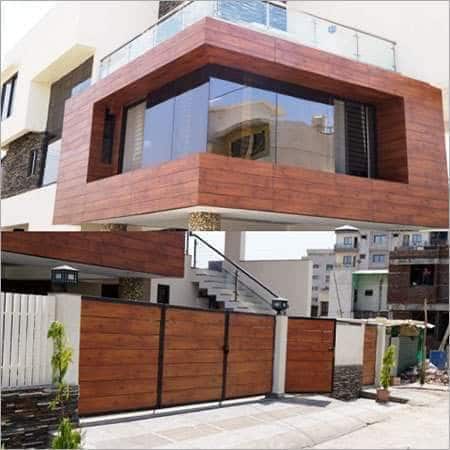In the realm of contemporary architecture and construction, High-Pressure Laminate (HPL) cladding has emerged as a versatile and durable solution for enhancing the aesthetics and functionality of building exteriors. Its ability to withstand various environmental stressors, including moisture and water exposure, has made it a popular choice for designers and architects worldwide. Let's delve deeper into the realm of HPL cladding and unveil its impressive waterproof properties, demystifying the misconceptions that surround this innovative material.
Understanding HPL Cladding: A Brief Overview
HPL cladding is a composite material crafted by fusing multiple layers of resin-treated kraft paper under high pressure and temperature. The top layer features a decorative sheet, providing a vast array of design options, textures, and finishes to suit diverse architectural preferences. HPL cladding is widely recognized for its robustness, longevity, and resistance to various environmental factors, making it an ideal choice for both interior and exterior applications.
Unveiling Its Waterproof Properties: Separating Fact from Fiction
Waterproofing Myth Debunked 1: Unsuitability for Moist Environments
Contrary to the misconception that HPL cladding is unsuitable for moist environments, it has been engineered to withstand moisture and humidity effectively. Its impermeable surface acts as a reliable barrier against water penetration, making it an excellent choice for building facades, balconies, and other exterior applications where exposure to rain and moisture is a common concern.
Waterproofing Myth Debunked 2: Vulnerability to Weather Extremes
Another myth surrounding HPL cladding revolves around its presumed vulnerability to harsh weather conditions. However, HPL cladding is designed to withstand extreme temperatures, UV exposure, and fluctuations in climate, ensuring its structural integrity and aesthetic appeal remain intact over time. This resilience against weather extremes makes it an ideal solution for buildings located in regions prone to varying environmental challenges.
Waterproofing Myth Debunked 3: High Maintenance Requirements
Contrary to the belief that HPL cladding necessitates extensive maintenance to preserve its waterproof properties, it is known for its low maintenance requirements. Its resistance to stains, dirt, and moisture accumulation simplifies the cleaning process, reducing the need for frequent upkeep and ensuring that the cladding maintains its visual appeal and performance efficiency over an extended period.
Leveraging HPL Cladding for Waterproofing Solutions: Benefits and Applications
The waterproof properties of HPL cladding make it a versatile solution for an array of construction and design needs. Its durability, design flexibility, and resistance to water and moisture render it suitable for various applications, including exterior facades, wall cladding, and decorative elements. Moreover, its ability to preserve its aesthetic appeal and structural integrity in the face of water exposure makes it an excellent choice for both commercial and residential projects seeking sustainable and visually appealing solutions.
In Conclusion
Decoding the waterproof properties of HPL cladding demystifies the misconceptions that surround this innovative material. By understanding its impressive resilience against moisture, its ability to withstand weather extremes, and its low maintenance requirements, architects, designers, and homeowners can leverage the benefits of HPL cladding to create enduring and visually striking structures. The incorporation of HPL cladding not only enhances the aesthetics of buildings but also ensures long-term durability, making it a prominent choice for modern construction projects.


No comments yet